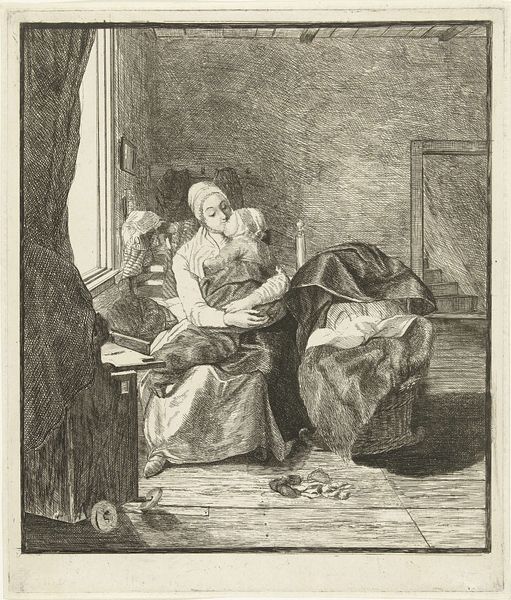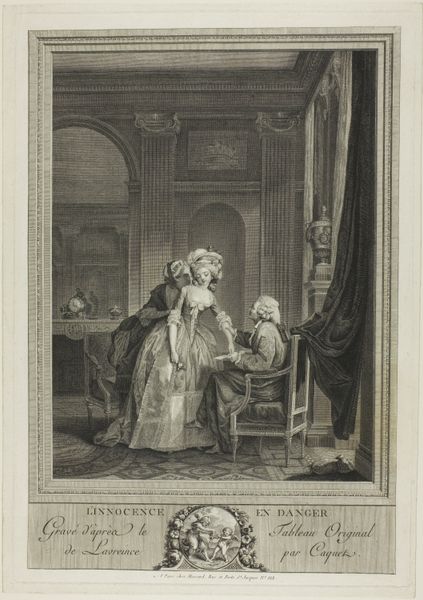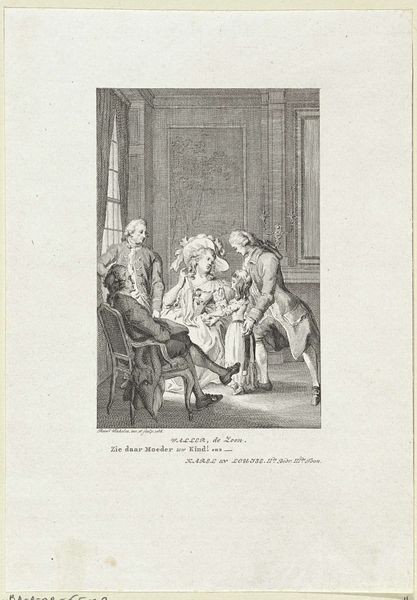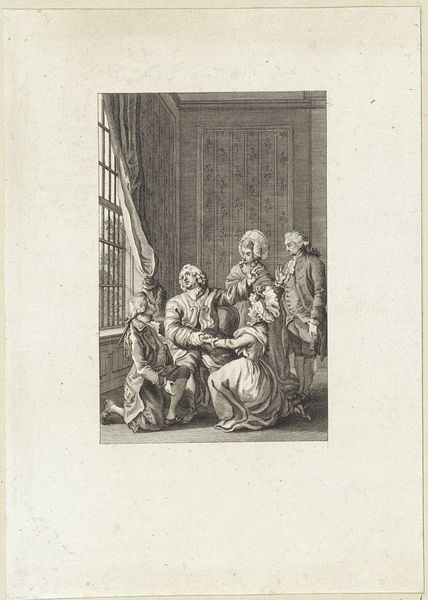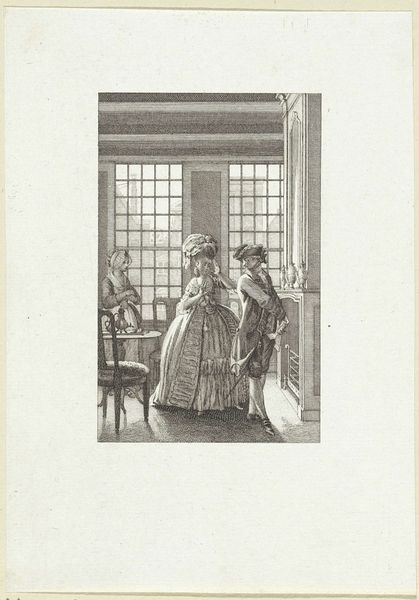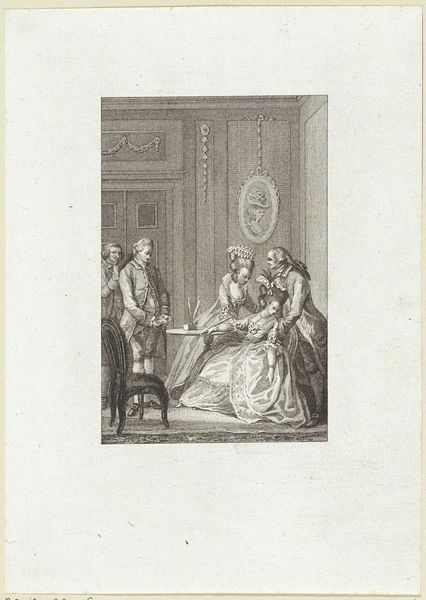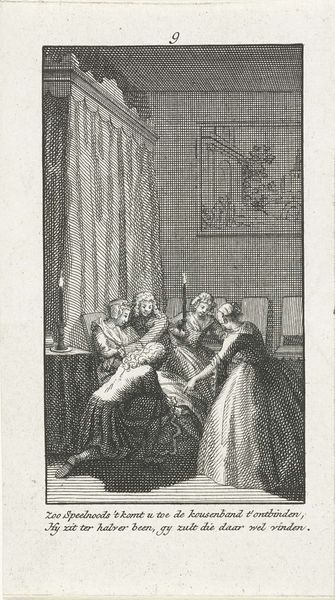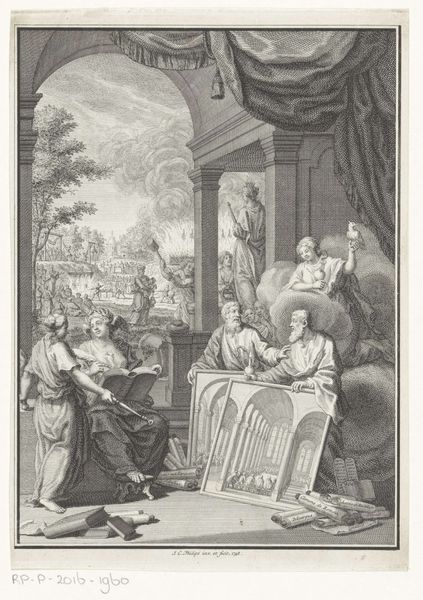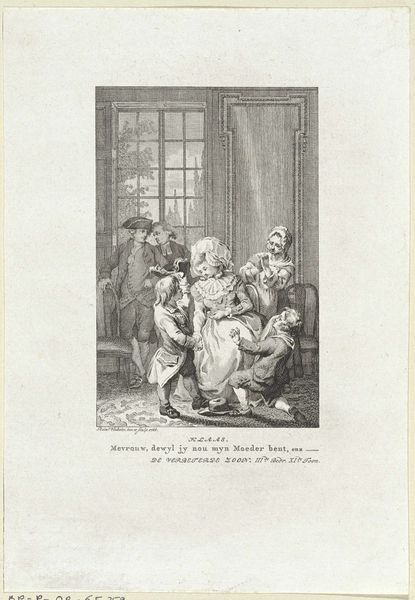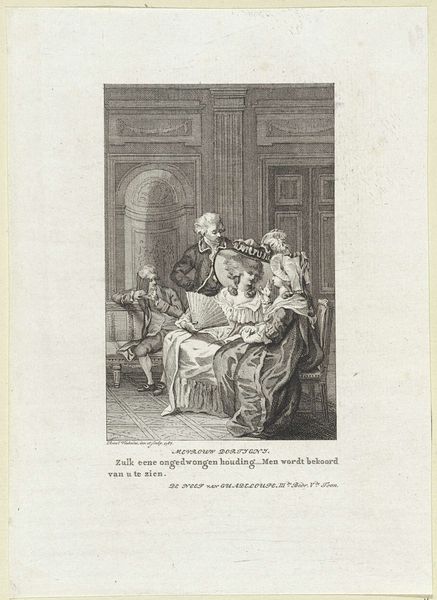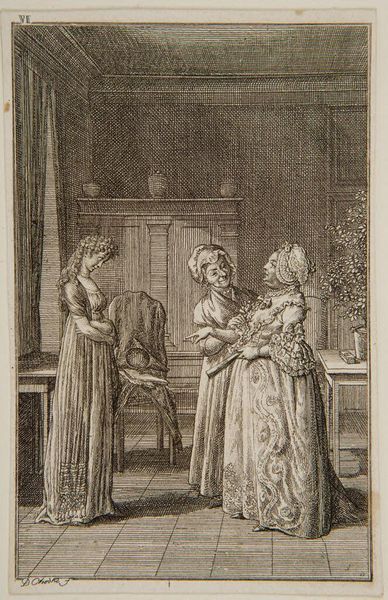
drawing, print, etching, paper
#
portrait
#
drawing
# print
#
etching
#
figuration
#
paper
#
historical photography
#
intimism
#
framed image
#
genre-painting
#
history-painting
Dimensions: 297 × 216 mm (image); 405 × 294 mm (plate/sheet)
Copyright: Public Domain
Editor: Looking at this etching, called "The Director" by Nicolas Joseph Voyez, I’m immediately drawn to the incredibly detailed depiction of fabrics. The way the light falls on the different textures makes me wonder about the process of creating this print. What story about production and consumption do you see in this work? Curator: Excellent observation! Focusing on the materiality here, the very act of etching itself – the skilled labor, the copper plate, the paper – speaks to a specific kind of production, a reproduction available to a certain class. Think about the market for these prints: were they widely circulated, or were they luxury items, further cementing class distinctions? The depiction of such elaborate costumes points to a society obsessed with appearance, consuming textiles at a furious pace. Editor: So the print itself is a commodity reflecting the consumption it depicts? Is the material valuable? Curator: Precisely! And look at the scene: a gathering in what appears to be a well-appointed room. Consider the cost of furnishing such a space, the social labor involved in producing these objects, the woodworker who crafted the chair or the glassmaker who fabricated the mirror in the background. Everything on display becomes part of a cycle of production, value and exchange. Do you think that's something the artist tried to put forward? Editor: I hadn’t considered all of that! It’s like the image is a microcosm of the entire economic system. Curator: Absolutely! And the “Director,” presumably orchestrating this scene in some way, is perhaps emblematic of those who control the means of production or enable trade. A celebration of the industrial processes but also perhaps a study of inequality that occurred as a result of that production and consumption? Editor: It's fascinating how analyzing the material aspects of the print, and the depicted environment, opens up entirely new perspectives on this image. Thank you! Curator: My pleasure! Focusing on materiality allows us to unearth the often-hidden histories embedded within works of art.
Comments
No comments
Be the first to comment and join the conversation on the ultimate creative platform.
